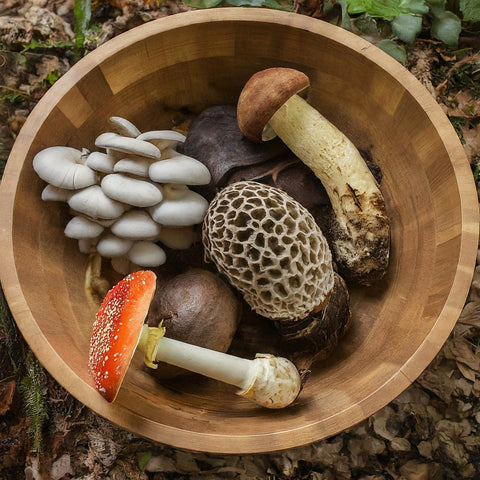The Anatomy of a Mushroom

Mushrooms are the reproductive structures of fungi. They are visible above ground, while the main part of the fungus, called the mycelium, is located underground. In this presentation, we will explore the different parts of a mushroom and their functions.
Cap

- The cap is the most visible part of the mushroom.
- It comes in various shapes and sizes, and can be smooth, scaly, or sticky.
- The cap produces spores, which are the reproductive units of the fungus.
The cap is the most recognizable part of the mushroom. It comes in a wide variety of shapes and sizes, such as round, conical, or fan-shaped. The surface of the cap can be smooth, scaly, sticky, or slimy. The cap is responsible for producing spores, which are the reproductive units of the fungus. Spores are released from the cap and carried by the wind to new locations, where they can germinate and form new fungi.
Gills

- The gills are located on the underside of the cap.
- They are thin, plate-like structures that are responsible for spore production.
- The number, size, and color of the gills can vary depending on the mushroom species.
The gills are located on the underside of the cap and are responsible for spore production. They are thin, plate-like structures that radiate outward from the stem like spokes on a wheel. The number, size, and color of the gills can vary depending on the mushroom species. Some mushrooms have gills that are close together, while others have gills that are far apart. The color of the gills can be white, cream, yellow, brown, or even black.
Stipe (Stem)

- The stipe, also known as the stem, is the part of the mushroom that supports the cap.
- It can be short and thick, long and slender, or hollow or solid.
- The stipe can also have features such as rings, scales, or veils.
Speaker Notes The stipe, also known as the stem, is the part of the mushroom that supports the cap and elevates it above the ground. It can be short and thick, long and slender, or hollow or solid. The stipe can also have features such as rings, scales, or veils. These features can help to identify different species of mushrooms.
Veil

- The veil is a thin membrane that can cover the gills of a young mushroom.
- As the mushroom matures, the veil tears away, leaving behind remnants that can be seen on the cap or stem.
- Not all mushrooms have veils.
The veil is a thin membrane that can cover the gills of a young mushroom. It helps to protect the developing spores from drying out or being damaged. As the mushroom matures, the veil tears away, leaving behind remnants that can be seen on the cap or stem. Not all mushrooms have veils. Some mushrooms have a universal veil that completely encloses the young mushroom, while others have a partial veil that only covers the gills.

